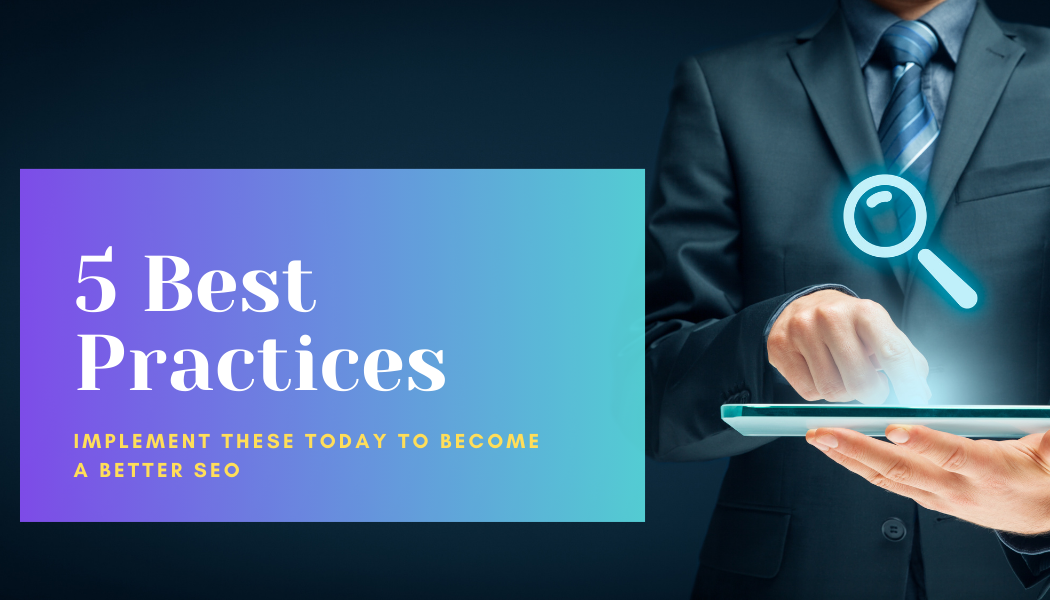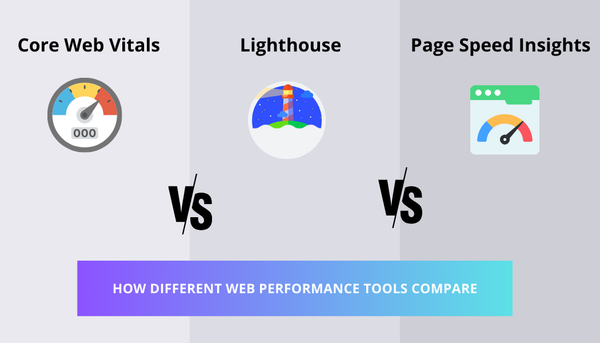5 Best Practices to Become a Better SEO Today.
Become a better SEO by implementing these 5 best practices into your workflow and processes.

As a teacher, I am often asked about what skills are important to learn in order to grow from being a junior SEO to an intermediate or senior SEO. The biggest advice I have here is that it's not necessarily the specific subjects you need to learn more about, chances are you already possess a lot of the knowledge needed. To really get to the next level, it’s about diving in headfirst and getting that experience under your belt identifying and fixing different problems.
So if experience comes with time, what are some steps you can take today. To become a better SEO? Notice I said better SEO, not better at SEO. Honing your craft and your approach will contribute to the latter. It's about finding ways to work smarter, not harder, allowing you to continuously learn and grow.
Having a strong framework in place will help put you on the path to being an expert SEO. Without a solid foundation, it becomes challenging to scale campaigns efficiently and ensure they continue to produce favorable outcomes over time. While the tactical optimization work is important, it can only take you so far.
I want to discuss some of the most impactful SEO best practices you can incorporate into your workflow or process. These best practices create the infrastructure for long-term SEO success by enabling you to improve your workflow, gain confidence, and consistently deliver results that go beyond one-off tasks and projects.
While these foundational elements may not be flashy or exciting, getting them right lays the groundwork for growth. They facilitate scaling through efficient workflows while ensuring quality and consistency across SEO initiatives over time.
The following sections provide actionable steps to implement each of these crucial SEO best practices.
5 Practices To Level Up Your Skills
Things you can do today to become a better SEO
💻 Tip # 1: Have a Regular Audit Plan

Regular technical and performance audits are an essential best practice to consistently follow in SEO. Although most SEOs know how to perform audits, it is often done as a one-off project during the initial strategy setting stage, or when something goes wrong and a deep-dive is needed. It is essential to develop ingrained audit processes to ensure they are performed consistently. Making audits a habit enables you to spot issues early and be proactive, rather than reactive.
Scheduling monthly or quarterly audits using tools like SEMrush, Ahrefs, or manually through Screaming Frog is a good practice. Monthly reviews enable you to stay on top of changes more closely, while quarterly assessments can provide more in-depth information to add to your strategy.
The appropriate cadence depends on resource bandwidth and the pace of site and industry changes. For example, sites that are likely impacted by YMYL may want more frequent reviews to better understand how Google is viewing their content, while a stable lead generation site might need less frequent analysis.
It is important to track changes month-over-month across all aspects audited - technical SEO, on-page optimization, content, rankings, traffic, etc. By spotting drops or gains early, you can associate them with recent Google updates or changes made and investigate potential causes. Being proactive saves you from major ranking crashes down the line.
For any issues or opportunities uncovered, log action items to fix them. Provide audit recaps and next steps to clients and team members so everyone is kept informed. Having an audit process is useless unless you act on the findings and communicate them effectively.
Staying on top of your website's health through recurring audits gives you an SEO early warning system. You can catch problems before they spiral or spot areas to improve and capitalize on them faster.
👀 Tip #2: Monitor Algorithm and Google Updates

Staying on top of Google's algorithm updates goes hand-in-hand with performing regular website audits. By keeping tabs on the latest developments from Google, you get critical context to understand and interpret changes uncovered during your audits.
When Google rolls out an update, read summaries from reputable sites to understand its purpose and any major impacts seen. Avoid knee-jerk reactions if you hear of an update, as not all updates will directly affect your site.
Next, check if your website was impacted. You can use a variety of tools from free ones like GA4 or Google Search Console to paid tools like Ahrefs, SEMRush, Moz and more. Look at changes to rankings, traffic, and click-through rates. Understand why and how your site was impacted, and how wide scale the effects of the update seem to be.
If you notice significant changes, you may need to tweak your SEO strategy accordingly. For instance, after a broad core algorithm update, you may find that long-form, comprehensive content performs better. Alternatively, a Page Experience update may now prioritize faster load speeds, or accessibility. Document your findings and educate team members on the changes so you can collaborate effectively.
Ongoing education around the "why" behind Google updates prevents you from making misguided, reactive changes. Pair it with monitoring tools to assess if/how your site was impacted. This context empowers you to tweak your SEO strategy based firmly on the latest ranking signals and best practices.
Staying up-to-date on algorithms provides the missing piece between your audit analysis and informed optimization decisions. Make it a regular habit.
⚙️ Tip #3: Automate Repetitive SEO Tasks

When it comes to SEO, it's important to automate repetitive tasks so you can focus on high-level strategy and impactful optimization work. You can use tools like SEMrush, Ahrefs, and Moz to automatically monitor rankings on a daily or weekly basis, and review reports to quickly spot sudden ranking increases or decreases. Look for patterns across groups of pages or keywords to inform optimization priorities, and remember to keep monitoring patterns and trends.
Another way to automate SEO tasks is to set up technical SEO crawls on a recurring schedule to catch errors or drops in performance before they escalate. Configure alerts when key thresholds are crossed, like 4XX errors spiking above 5% or page speed decreases. You can also create customized, automated reports with your tool of choice and share them with key stakeholders on a consistent cadence. Provide snapshots of key metrics like organic traffic, conversions, or rankings of your core keywords.
It's also important to set up alerts for new link-building or content opportunities. For example, if you notice a competitor gaining lots of domain links or publishing popular content, you can address these faster with automated monitoring.
Additionally, utilizing AI tools can significantly improve efficiency for repetitive tasks like optimizing pages, enhancing readability, or compiling competitor research. Keep in mind that these tools are adopting new features every day, so it's important to understand how they can be used. Test theories and ideas to discover new ways AI can help.
By automating repetitive SEO activities, you can spend less time on rote tasks and more time on high-value strategy and optimization. This will allow you to be more proactive in responding to changes uncovered in audits or algorithm updates.
🏃♀️ Tip #4: Keep up with SEO best practices

Staying up-to-date with SEO best practices is crucial since Google's algorithms are continually evolving, and outdated techniques may be risky. By keeping yourself informed of the latest SEO recommendations, you can make informed decisions about optimization changes. This can help you distinguish between the latest fads and enduring best practices that you can rely on.
To stay up-to-date, you should read regularly updated SEO guides from reputable sources like Moz, Ahrefs, and Search Engine Journal. You can also subscribe to newsletters and blogs from experts like Mike King, Aleyda Solis , Cyrus Shephard, and Lily Ray who share their valuable techniques, experiments, case studies and more.
Attending webinars, virtual summits, and conferences from leading SEOs can also be helpful. MozCon, Pubcon, and BrightonSEO are some of the annual events that offer concentrated learning on important and emerging topics.
Joining SEO communities like the Women in Tech SEO or Reddit SEO can also help you stay on top of trends. Engaging with fellow practitioners can help you learn new techniques that are working for them. You can also crowdsource answers to your specific questions.
It's important to distinguish between enduring best practices and fleeting trends and prioritize what to learn. Pairing your ongoing education with hands-on site auditing and monitoring can help you make informed decisions. This can ensure that you don't use outdated tactics or risky techniques without being aware of it.
📈 Tip # 5: Continuously Measure, Test & Iterate

The best practices covered so far - recurring audits, algorithm monitoring, ongoing education, and automation - help cultivate an adaptive SEO strategy. But maximizing their impact requires rigorously measuring, testing, and iterating based on the insights uncovered.
Start by setting SMART (specific, measurable, achievable, relevant, and time-bound) goals so you have clarity on what success looks like. Choose a small handful of key metrics to track based on your objectives around rankings, traffic, conversions, and revenue.
Select analytics tools like Google Analytics, Search Console, and SEMrush to continuously track your metrics. When paired with automated monitoring and alerts, you get near real-time visibility into performance.
Test proposed optimizations at a small scale first. Try new title formulations, internal linking structures, or content themes with a subset of pages before rolling out sitewide. Continually refine based on measured results.
Iterate quickly based on the insights uncovered from your recurring audits and external monitoring. By spotting issues early and rapidly testing fixes, you minimize risk and maximize results.
This combination of disciplined goal-setting, progress tracking, controlled testing, and rapid iteration is the hallmark of elite SEO teams. It's what enables them to scale successfully. The best practices outlined here facilitate that continual optimization flywheel.
Lean into measurement, testing, and iteration to propel your SEO strategy to the next level. With the right processes in place, small but compounding wins add up to transformative results.
Implementing rigorous SEO processes is less glamorous than tactical optimization work, but lays the foundation for long-term success. By consistently auditing, monitoring, learning, automating, testing, and iterating, you transform SEO from a project-based practice to an ingrained discipline.
While no shortcut to the top exists, embracing these best practices positions you for scalable, sustained growth. They alleviate reactionary fire-drilling through systematic early detection and prevention. Continual marginal gains compound over time when made a habit.
So take the first step by scheduling that monthly audit and signing up for an industry newsletter. Small, consistent optimizations driven by real insights beat large, sporadic changes made crossing your fingers. Feed the flywheel. Momentum begets momentum.
With the right systems and processes fueling your efforts, the sky is the limit for your SEO performance. Here’s to reaching new heights!




